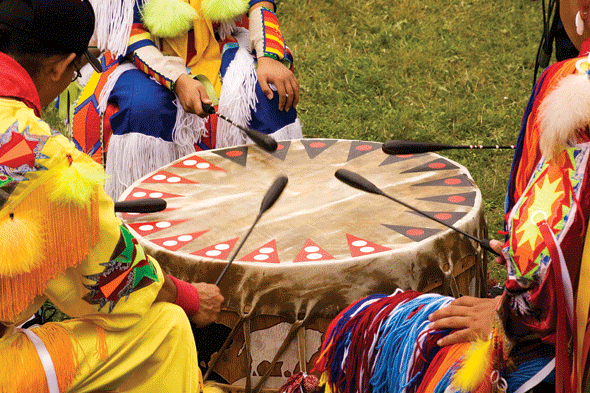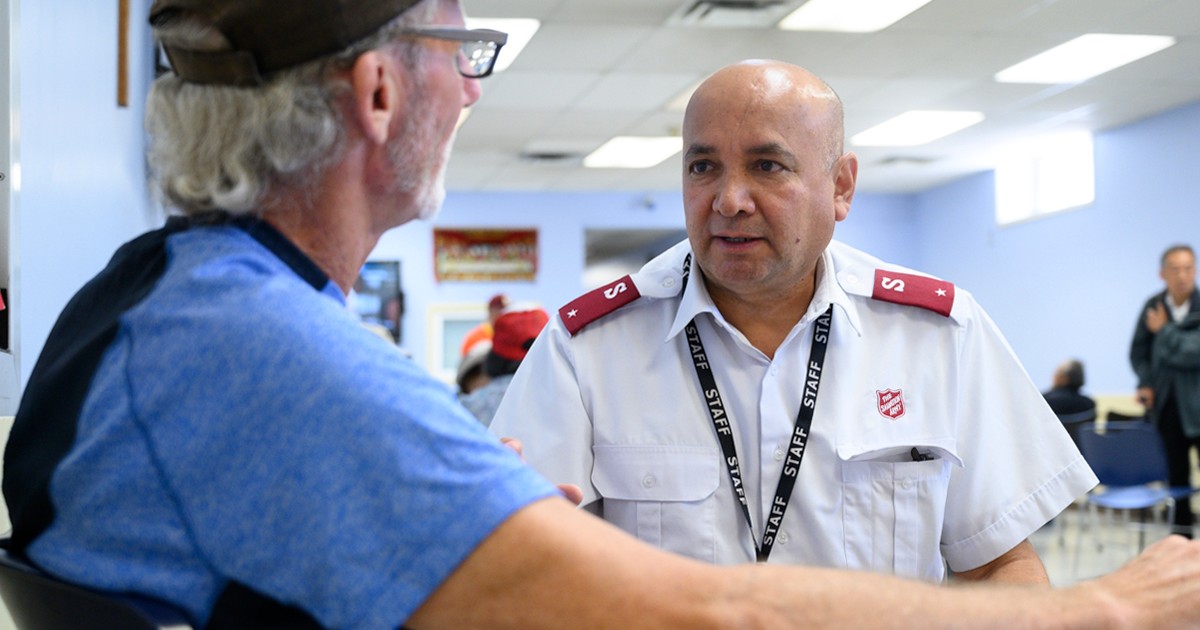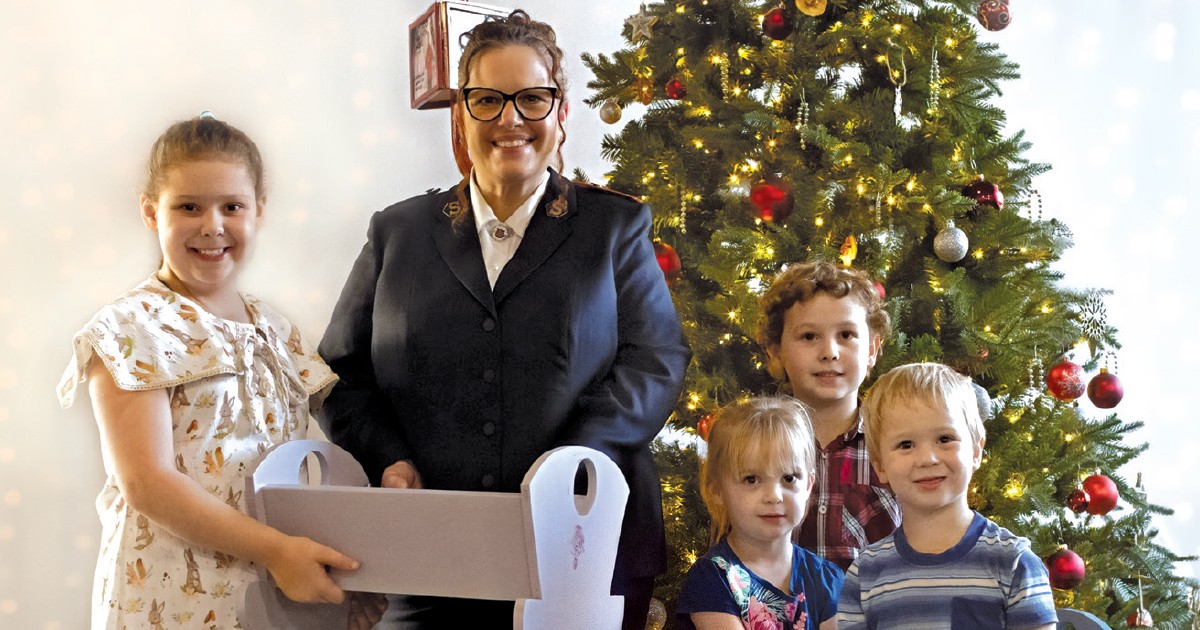 Cartoonist Gary Larson once penned a Far Side cartoon in which two male deer are standing up talking. One buck has three circles on his chest that just happen to look like a bull's-eye on an archery target. The other buck comments: “Bummer of a birthmark, Hal …” As a native man I resemble that remark. I am really pretty nervous about being a target, or a member of a “target population.” Sure I can help you find out where the urban natives are, and perhaps even share some effective evangelistic strategies with you. But I know I will be the target, and that I will be helping you to aim at my relations.
Cartoonist Gary Larson once penned a Far Side cartoon in which two male deer are standing up talking. One buck has three circles on his chest that just happen to look like a bull's-eye on an archery target. The other buck comments: “Bummer of a birthmark, Hal …” As a native man I resemble that remark. I am really pretty nervous about being a target, or a member of a “target population.” Sure I can help you find out where the urban natives are, and perhaps even share some effective evangelistic strategies with you. But I know I will be the target, and that I will be helping you to aim at my relations.
Anita Keith's book Rise Up: Shaping the Future of Indigenous Ministry through Cross-Cultural Partnerships greatly encouraged me―until it dawned on me that it is not so hard to get natives to “rise up.” The struggle is to get the majority church to “sit down!” I truly support her call for partnerships between native and non-native, but non-natives can rarely be “native role models.” A non-native can only be a good role model, but never a good Mohawk, Cree or Inuit role model. Somehow this concept has been lost on North American missions. Non-natives still lead most of our native churches, but they are never leaders within our cultures. Once the majority church decides to disciple Aboriginal believers to lead church-planting efforts, then we will start to see some inroads and permanent transformation. As long as the Gospel is a Western commodity entrusted only to professional non-native leaders, the spiritual transformation of First Nations communities will be stifled.
According to StatsCan, more than have of North American Indians live in cities and more than two thirds of Metis as well. There are many reasons for not living on the reserves, from lack of employment to poverty and limited health care. But in cities, we are not so visible, except in the ugliest sorts of ways. Downtown Vancouver has been the site of many “missionary to the homeless natives” films, and has been a favourite with Korean missionary film crews coming to our West coast. Even in the big cities, we don't tend to mix well with other groups, creating the perception that there aren't enough of us to really minister to, but that is not a valid assumption.
Over-Evangelized But Under-Reached
I heard an elder say that Native North Americans are the most over-evangelized but under-reached people group in the world. If someone cares to do the analysis, simply tabulate the number of native missions agencies, home missions, short-term missions in North America, and then measure the “success” of those efforts. Check the number of “all-native” churches for the average attendance and growth. You'll find these numbers are stunningly low, but that does not mean that there has not been a substantial amount of preaching, tent revivals, church revivals, giveaways and basketball tournaments, all with the aim of “reaching the Aboriginal peoples for Christ.”
As we hurtled towards the year 2000, a great number of end-time evangelization plans came into being. We supported our strategies with databases exposing “hidden peoples” that had not been reached with the Gospel. Another measurement of “the unreached” were those places said to have no “Evangelical witness,” implying that Catholic or Orthodox churches did not qualify.
If it was that easy to discount long-established Catholic and Orthodox churches, imagine how easily the work of the Spirit is dismissed in Aboriginal communities. Michael Oleksa (author of Orthodox Alaska) of the Russian Orthodox church has written about how one may enter a community with the intention of seeking out and understanding the work of the Spirit among them, both from their history (as learned through their stories) and from current practice (as discovered in protocol, prayer, ceremony and teachings). I tell you about Oleksa's work in order that the work of the Spirit among urban First Nations will not be yet again discounted, just because they may not be “reserve Indians.”
Are we willing to empower indigenous leadership to take responsibility within their own setting?
Under-Reached or Un-Released?
How can a missions agency deploy dozens of missionaries and yet several decades later find that none of the locals (a.k.a. “target population”) are in leadership? It seems, if we reach back to the New Testament model, that leaders were identified very quickly and discipled for leadership responsibility. Paul started churches, then he left them to develop on their own in their own particular cultural setting, which was, of course, non-Jewish.
Any denomination that aims for the urban Aboriginal population had best decide its mission. Are they there to “provide services”? Do they exist to “deploy programs”? Are they there to empower indigenous leadership to take responsibility within their own setting? Are they simply extending the current denominational church-planting paradigm with slight accommodations for “cultural distinctives”?
“Reaching” is an ambiguous term, generally implying the success of having met the goals of the organization. But were the dreams, goals and hearts of the people heard and respected? Or was some “universal” wisdom applied that seemed to produce results?
It is tempting to simply try and describe the nature of the urban Aboriginal population, to try and give a handle to ministry professionals, but for genuine transformation to occur among First Nations, repentance must first begin in the Church.
Evangelization or Assimilation?
How can you tell the difference between the evangelization and assimilation? The truth is, only an Aboriginal can tell the difference. Western Christianity has so confused the Good News with Western values that it has lost the moral authority to proclaim the Gospel. Western Christianity uses conformity to measure godliness. They expect natives to attend church like they do, dress the same, use the same spiritual jargon and follow the non-native leadership. A cultural outsider will not be able to accurately judge transformation within an Aboriginal community.
There are two identifiable sources for understanding how to work in an urban First Nations setting. First, the reserve of origin is the primary source of identity, not the city in which they live. An Aboriginal inhabitant of Winnipeg, if asked: “Where are you from?” will identify their reserve, not Winnipeg. While it is true that around two thirds of natives live off reserve, it does not diminish the reserve as the single most important point of reference for identity.
Churches or Friendship Centres?
A second major source of identity for the urban native is Aboriginal Friendship Centres, such as the one we frequent on Hastings in East Vancouver, or the Thunderbird Lodge in Winnipeg. The friendship centre movement provides an intertribal lodge, common ground for natives to be natives. Native boards with various funding sources run the centres, but churches are rarely involved. In Canada there are over 115 gathering places for First Nations people (see www.nafc-Aboriginal.com).
In Vancouver, there is native dance and song on Tuesday, Wednesday and Thursday evenings. Tuesday night is “Plains Night” for powwow-type songs and dances. Wednesday is “Coastal Night” with Haidas, Tlingits, Tsimshians and more, some in T-shirts but others in button blankets and cedar potlatch hats. Thursday night is Metis night, with reels danced by fiddle music. But so much more goes on at these centres including programs for elders and youth and families. Sadly, few churches are ever involved with the friendship centres, but if you want to know where the natives are, you better look them up.
In Canada, successful evangelism and church-planting is measured by church attendance. Yes, there are some individual natives that attend churches as minorities, but for urban First Nations communities in Canada, the church is not central at all. The church has not yet learned how to bring the Good News to a community, although we seem to have the individual approach down to a science. Instead of calling the natives to come to your church, why not instead join the native community? There are 115 friendship centers all across Canada that are open to all races, and if you believe that you are called to serve our communities, then choose where you will stand.
MultiCultural or Cultural Insiders?
When majority of Canadians consider church planting, most strategies aim to assimilate various cultures, and new churches are emerging in North America under the MECC (multi-ethnic cross-cultural) banner. Using monikers such “All Nations,” these churches expect all ethnicities to join them, and, yes, there are some urbanites who enjoy the feeling of “world church.” But please don't assume that natives are part of this crowd.
Those First Nations people who want to be in a church are already attending. Merely expanding the marketing message won't reach us.
• When denominations begin to operate seamlessly within our communities and cultures, that is when we might join you.
• When we hear about talking circles, potlatches, giveaways, naming, healing ceremonies and family powwows, you might finally get our attention.
• When we see that you have released native men and women to be our leaders instead of giving us non-native caretakers, that will be a new day.
• When you give us the responsibility to exegete our own culture instead of doing it for us, you'll get our attention. Authentic contextualization of the Gospel cannot be imposed by outsiders, but rather must be an indigenous exercise from within the community itself.
• When we as natives are given the tools and the education to understand the theological and historical issues that other cultures have encountered, then we will be able to do the same for our communities.
Who Will Go for Us?
In Canada, where are the native theologians who have explored and bridged the traditional expressions of spirituality? Where are the Aboriginal Jesus-followers who are welcomed in the Midewewin Lodge of the Anishinabe, the Co-Salish smokehouse (“seowan”) of B.C., or the longhouse of the East Coast Mohawks? Who will go for us to the Cree shaking tent, the sweat lodge, the Indian Shaker church or the Sundance? Who will speak with the pipe carriers and the medicine people and the canoe families? This work can only be done from within, and if the majority church really wants to reach out to the First Nations communities, there will have to be a serious long-term effort of building relationships of trust, investing in our education and funding community spiritual workers who will be able to make significant and substantial inroads into the cultures that are already ours.









Comment
On Sunday, February 28, 2016, Carr said:
Leave a Comment